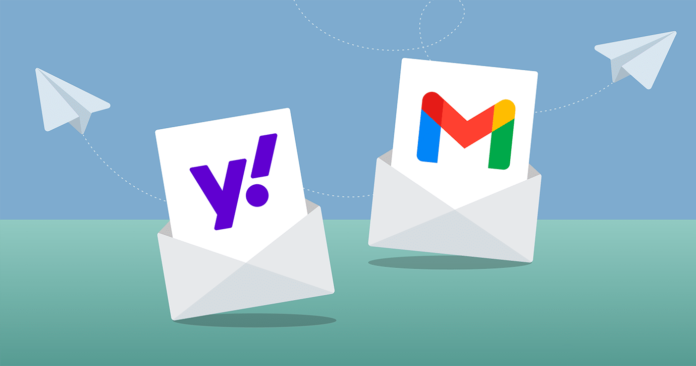Create your very own Auto Publish News/Blog Site and Earn Passive Income in Just 4 Easy Steps
Is there any way to ensure your emails always land in the inbox?
With Google and Yahoo enforcing new email deliverability rules, reaching your subscribers is about to get more difficult. But worry not—as long as you follow these new rules, your email campaigns should stay out of spam.
From authenticating your emails to avoiding bounces and spam complaints, we’ll go through the steps you need to take to boost and maintain your inbox reach.
What are the new Gmail email deliverability rules?
Big changes are coming to the email industry: starting in February 2024, Google and Yahoo will require mass senders to abide by a series of new rules.
If you send more than 5,000 daily emails to Google and Yahoo addresses, you must:
- Authenticate your emails using security protocols like DKIM, SPF, and DMARC.
- Allow people to unsubscribe by clicking just one link, and honor unsubscribes within two days.
- Maintain a spam complaint rate under 0.3% (no more than three spam reports for every 1,000 messages).
All these standards aim to create a safer, more enjoyable experience for the average Gmail or Yahoo email user. Email authentication makes an organization less vulnerable to spoofing and spam attacks. One-click unsubscribes allow users to opt out of an email list easily. Keeping a minimal spam complaint rate ensures the content people receive in their inboxes is relevant to them.
“These changes are like a tune-up for the email world, and by fixing a few things under the hood, we can keep email running smoothly,” Google’s Group Product Manager Neil Kumaran explained.
Google and Yahoo partnered in this effort to reduce the risk of phishing, spam, and malware. The two email providers will enforce the new email deliverability rules across both platforms. “A key mission of Yahoo is to deliver messages that consumers want to receive and filter out the messages they don’t,” wrote Marcel Becker, Senior Director of Product Management at Yahoo.
Bonus tip: Broken links and images make for poor email user experiences, and that can start sending your campaigns to spam. Test every email before you hit send to ensure it renders correctly across all email clients and devices.
How to comply with Google and Yahoo’s new email deliverability rules
As an email marketer, your plate is full already. Writing, designing, and testing your email campaigns is overwhelming enough. But if you want your great emails to land in the inbox, you can’t afford to ignore Google and Yahoo’s requirements.
Now, the good news: abiding by the rules isn’t that hard.
Let’s review them and see how you can adjust your email standards today for the best outcomes.
Step 1: Authenticate your emails
Authentication is the biggest email deliverability rule Google and Yahoo seem to emphasize, and for good reason. Email authentication helps ensure that an email sent from your domain is legitimate and not a spoofing attack.
“We’ve focused on a crucial aspect of email security: the validation that a sender is who they claim to be,” Google said. Yahoo, too, requires organizations to “leverage email authentication standards to guarantee the verification of the email sender’s identity.”
Here are the authentication protocols you need to implement by February 2024:
- Sender Policy Framework (SPF) allows you to specify the IP addresses or domains that can send emails on your behalf.
- DomainKeys Identified Email (DKIM) is a standard that lets you add a digital signature to the emails you send. Thus, email providers like Yahoo and Gmail can verify that an email came from you and not an impersonator.
- Domain-Based Messaging Authentication, Reporting and Conformance (DMARC) is a security protocol that aligns your SPF and DKIM policies and defines how mailbox providers should handle an email that fails an authentication check. This in-depth article on DMARC and additional email security protocols gives you all the info you need to begin protecting your domain.
Step 2: Let people unsubscribe easily and stop emailing them
When growing your email list, you want to make it easy for people to sign up, right? The new email deliverability rules will require you to apply the same concept to unsubscribing.
“You shouldn’t have to jump through hoops to stop receiving unwanted messages from a particular email sender. It should take one click,” Google says. So, if that’s not the case for you now, you must adjust this setting before February 2024.
To avoid spam complaints, make sure your unsubscribe link gets a visible spot in every one of your email templates. You want people to find it easily and be able to quickly opt out. Otherwise, they won’t hesitate to report you as spam. Another great way to help your audience only receive content they want from your brand is to have a robust preference center, where subscribers can pick and choose what communications they want to receive.
Source
Google and Yahoo will also enforce punctuality in honoring unsubscribe requests. You’ll have just two days to remove subscribers who opt out.
Both of these email deliverability rules will create safer, cleaner, and more pleasant inboxes for email users. For email providers like Google and Yahoo, that’s the ultimate goal, and as an email sender, you must do your part in achieving it.
Step 3: Beware of your spam complaint rate
Spam complaints have always played a critical role in helping mailbox providers gauge how trustworthy a sender is. The more reports you get, the more likely your emails are to go to the junk folder.
Email marketers have known for years that the accepted spam complaint rate is 0.1%, meaning one complaint for every 1,000 emails. Google and Yahoo stated that their threshold, starting early next year, will be 0.3%. That doesn’t mean you should relax and allow your spam complaints to pile up. On the contrary—to maintain healthy email deliverability, you must:
- Avoid emailing people without permission and purchasing email databases.
- Include a visible unsubscribe link in every email you send.
- Remove subscribers who mark you as spam right away and never email them again.
Bonus tip: Did you know that 78% of people will report an email as spam only because “it looks like spam”? You can further mitigate this risk by using a good email verification service. Some email verifiers detect and remove known complainers from your list before they get a chance to report you and damage your sender reputation.
Aside from building your email list responsibly, the best way to avoid spam complaints is to send the kind of emails people expect from you. So keep your content on-brand, avoid being overly promotional, and give people a good reason to engage.
For an email deliverability boost, follow the requirements before the deadline
Google and Yahoo’s new rules for large senders won’t go into effect until February 2024. That shouldn’t stop you from adopting the best practices above ahead of the deadline. Implementing them now can actually give your email deliverability a boost, according to Google.
On the other hand, if you don’t abide by the new rules by next year, “your email might not be delivered as expected, or might be marked as spam,” Google says.
Google will soon delete inactive accounts, so check your email list
Partnering with Yahoo is not Google’s only initiative to prevent spam, malware and phishing attacks.
In December 2023, the tech giant will start deleting accounts that have been inactive for more than two years. While this measure only applies to personal Google accounts, it will affect all Google Workspace apps, including Gmail.
For organizations communicating with a large segment of Gmail users, Google’s move may result in a high bounce rate—and thus, an email deliverability issue. A bounce rate higher than 2% stains your reputation with mailbox providers and puts all your future emails at risk of going to spam.
To prevent these risks, be proactive and validate your email list before Google begins deleting inactive accounts. If you have many Gmail addresses in your database, check that they’re still active and valid. Run them all through an email validator and also, filter out subscribers who haven’t engaged with your emails in more than six months. If it’s been years since someone last clicked on your emails, remove them from your list today. You don’t want to risk your Gmail email deliverability getting compromised!
Yahoo emphasizes email list quality in its Sending Best Practices. Ensuring your list is healthy is a basic email deliverability rule, so “remove invalid recipients from your list promptly,” Yahoo recommends. The guide includes several useful tips, so give it a read and follow it to help your emails go to the inbox.
Create your very own Auto Publish News/Blog Site and Earn Passive Income in Just 4 Easy Steps








